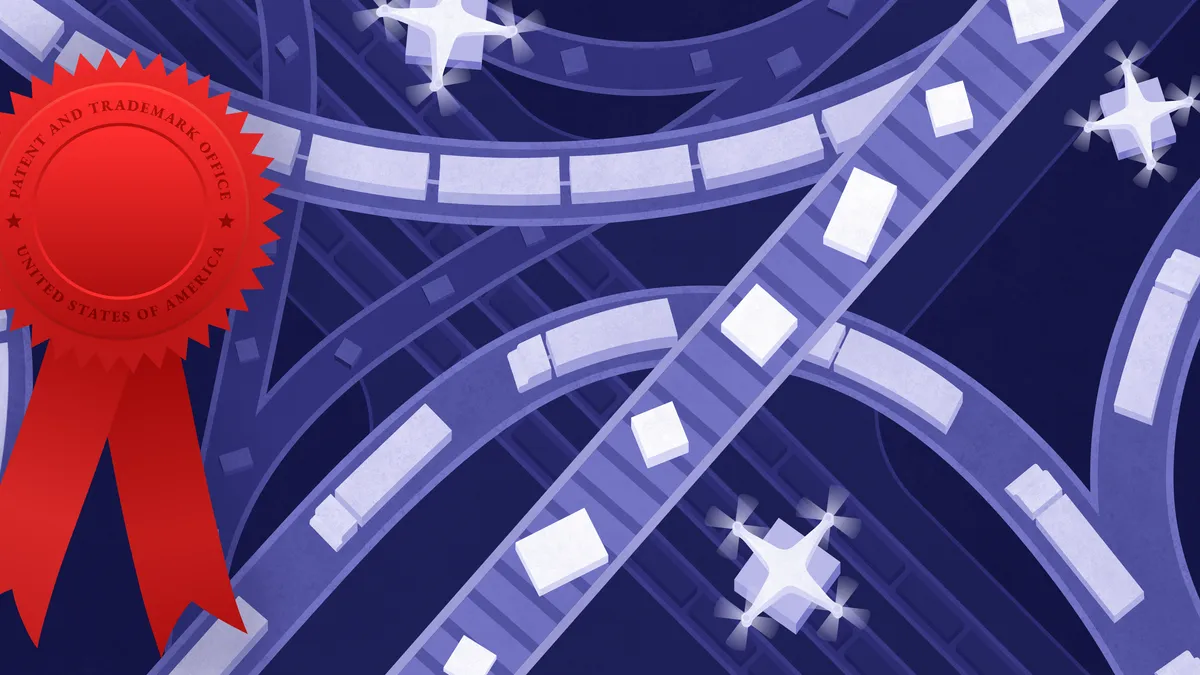This is Patent Pending. Supply chain-related patent applications are published every week and this is where we'll talk about the ones that could have the biggest impact on the supply chain and the ones that challenge the norm. We want to give you an idea of where supply chains are heading and what the industry is thinking. Keep an eye out for this column on Fridays. Read last week's here.
The drone mobile
The work UPS is doing with drones is mostly focused on medical campuses. But there have been glimpses of the company's plans to move into using this technology for parcel delivery.
The company released a video showing how it could work in 2017. It involves a truck with a sliding roof that allows a drone to take off with a package. Drivers send a drone to one home while they drive to a different one allowing them to cover more deliveries in the same amount of time.
In a patent application filed last year and updated this week, UPS provides more details.
One drawback of drones and their current capabilities is their limited range. If drones leave from a final sort facility there is a limited area that could benefit. But if drones are using the UPS truck as their base, this extends their reach. The patent outlines a scenario in which a delivery vehicle is converted to a mobile hub for multiple drones. The truck could be driven manually or autonomously.
The drone will secure the package with a pair of gripping arms. A pair of loading robot place packages onto drones in the vehicle.
UPS says this kind of system would save fuel and speed up delivery. For now, UPS is focusing on other drone opportunities in healthcare with its subsidiary Flight Forward. But it's not ruling out parcel delivery.
"When the regulations are complete we certainly believe there are residential opportunities and other delivery opportunities that will help to supplement the incredible group of drivers we have all over the world," UPS CEO David Abney said last month on CNBC.
Read up:
Amazon's got some stuff to sort through
Amazon is constantly looking for ways to automate the internal processes at its fulfillment enters. This includes parcel sorting, according to a patent application published this week.
A major part of the sortation process is getting the package where it needs to be. The system includes a chute in the conveyor belt and multiple openings on the other end of the chute leading to containers.
The process starts with an automated sorting process. This can selectively decide which packages will travel through the chute. Packages not selected to go into these containers would continue on to a manual sorting process.
Earlier this year, Amazon announced it had begun using a new robot, called Pegasus, in some sortation centers. This little robot, much like this patent, is all about helping get parcels into the right location. Pegaus is outfitted with a conveyor belt on the top where packages can be deposited and then it can be turned on to shoot the parcel into the correct chute. As more orders flow from Amzon.com to its fulfillment network the company will be looking for ways to keep up, especially as it continues to cut down on the promised delivery time.
Read up:
Automated fulfillment, from picklist to rollers
Amazon's largest retail competitor, Walmart, is also looking for ways to automate the pick and sort process, according to a patent application published this week.
Walmart lays out a system that relies on computer-controlled rollers, rather than a system of chutes, to get packages to the right location. When orders come into Walmart they are added to a master picklist. According to the patent, this picklist would be used by an automated guided vehicle to pick the item from the right location in the warehouse. It would carry the item to a conveyor belt. A scanning device at the beginning of the belt would be able to determine where the item needs to head next. This allows it to travel to the right place using the system of computer-controlled rollers that can change direction based on where the package needs to go.
Chutes or rollers? Is one better than the other? There are use cases for either. At the very least, it sounds like an opportunity for warehouse-themed Snakes and Ladders. Are you listening, Hasbro?
Read up:















